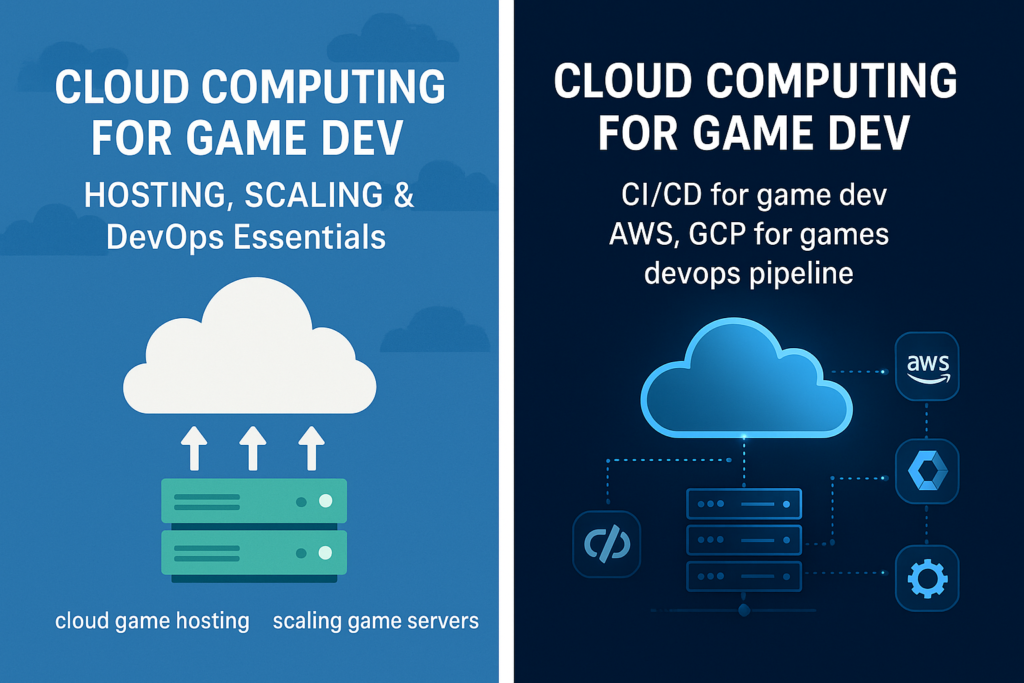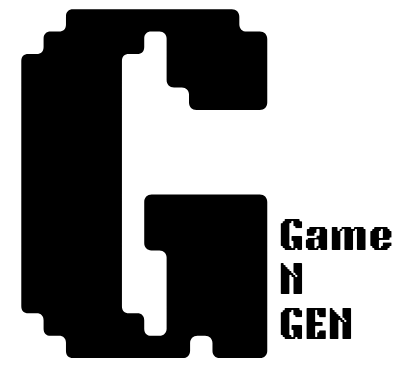Published on gamengen.cloud
By the GameNGen Editorial Team
🌐 Introduction: Cloud is the Backbone of Modern Game Development
In 2025, the gaming industry runs on the cloud.
From AAA studios to solo indie developers, cloud computing has become essential for hosting game servers, scaling on demand, and automating complex DevOps pipelines. As games grow more global, multiplayer, and AI-driven, the need for reliable, flexible cloud infrastructure is not just a luxury — it’s a necessity.
In this article, we’ll break down everything you need to know about cloud hosting for game development, including AWS, GCP, Azure, and the DevOps strategies that make it all run smoothly.

Table of Contents
☁️ Why Cloud Matters for Game Developers
Traditional servers can’t keep up with modern player expectations. Gamers want:
- Lag-free multiplayer
- Real-time updates
- Global access
- Instant scalability during peak hours
Cloud providers offer:
- Auto-scaling to match traffic
- Global CDN coverage
- Built-in load balancing
- Data backup + redundancy
- Seamless integration with CI/CD pipelines
The result? Faster deployment, better uptime, and lower costs for devs.
🏆 Top Cloud Providers for Game Development
Choosing the right provider can make or break your infrastructure. Here’s a breakdown of the best platforms in 2025:
🔹 Amazon Web Services (AWS) – The Industry Standard
- AWS GameLift for multiplayer hosting
- EC2 for scalable compute instances
- S3 for storing game assets
- Global reach and enterprise reliability
Used by: Riot Games (League of Legends), Ubisoft, Epic Games
🔹 Google Cloud Platform (GCP) – AI and Analytics King
- Google Kubernetes Engine (GKE) for containerized deployment
- BigQuery for game analytics
- Vertex AI for integrating ML models into games
Used by: Niantic (Pokémon GO), Square Enix
🔹 Microsoft Azure – Seamless Xbox Integration
- Azure PlayFab for game backend
- Azure DevOps for build automation
- Integration with Xbox Cloud Gaming ecosystem
Used by: Mojang (Minecraft), Rare, Undead Labs
⚙️ Setting Up Game Servers & Scaling
Cloud hosting allows developers to launch multiplayer-ready servers in minutes. Here’s how scaling works in real-time:
- 🟢 Base Servers: Always-on instances for normal traffic
- 🟡 Auto-Scale Triggers: More servers spin up during player surges
- 🔴 De-scale: Drop extra servers during off-peak hours to save money
You can even route players geographically with tools like CloudFront, Azure CDN, or Cloud Load Balancer for the lowest latency experience.
🔁 CI/CD for Game Developers
Automated deployment pipelines (CI/CD) are now standard in game dev workflows:
💡 What is CI/CD?
- CI (Continuous Integration): Automatically test code with every commit
- CD (Continuous Delivery/Deployment): Automatically push updates to servers
🧰 Tools You Can Use:
| Tool | Use |
|---|---|
| GitHub Actions | Automated builds/tests |
| Jenkins | Powerful CI/CD orchestrator |
| Azure DevOps | Full-stack DevOps platform |
| Cloud Build (GCP) | Fast, scalable CI/CD for containers |
With CI/CD, updates are smoother, rollbacks are safer, and your team can move faster without breaking the game.
🔐 DevOps Best Practices for Game Infrastructure
Following the right practices ensures performance, security, and cost-efficiency:
- ✅ Use infrastructure as code (Terraform, CloudFormation)
- ✅ Monitor with tools like Prometheus, Datadog, or CloudWatch
- ✅ Secure API endpoints with rate limits and token auth
- ✅ Separate dev/stage/prod environments
- ✅ Set budget alerts to avoid cloud bill shocks
What is cloud hosting in game development?
Cloud hosting lets game developers run multiplayer servers, store assets, and manage backends using platforms like AWS, Azure, and GCP. It offers scalability, low-latency performance, and global accessibility. This enables stable gameplay across regions without massive upfront server costs.
Which cloud provider is best for game developers?
Each provider excels in different areas: AWS is the industry standard, GCP is ideal for AI integration, and Azure is great for Xbox ecosystem support. Choose based on your game’s needs, budget, and backend complexity. Many developers use a multi-cloud or hybrid approach.
How does auto-scaling work in cloud gaming?
Auto-scaling adds or removes servers automatically based on player traffic. This ensures consistent performance during high-load events like game launches or peak hours. It also optimizes costs by scaling down when demand drops.
What is CI/CD and why is it important for game dev?
CI/CD stands for Continuous Integration and Continuous Deployment. It allows developers to test and deploy game updates automatically with less risk of errors. This improves workflow efficiency, reduces downtime, and enables faster feature releases.
🔗 Related Tool: Best U.S.-Based Cloud Game Hosting Comparison →
Use our free tool to compare:
- AWS, Azure, GCP hosting costs
- GameLift vs PlayFab vs GKE
- Latency maps and uptime benchmarks
